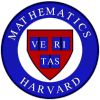
|
Summer Tutorials 2005
|
|

|
Summer Tutorials 2005
|
|
|
|
|
Greetings, What follows describes the 2005 version of our summer tutorial program. The goal of the program is to offer you some interesting mathematics if you have an ulterior motive for being in the Boston area during July and the beginning of August. In particular, the tutorials will run for six weeks meeting twice per week in the evenings (so as not to interfere with day time jobs). The tutorials will start roughly at the beginning of July and run to mid August. The precise starting dates and meeting times will be arranged for the convenience of the participants once the tutorial rosters are set. The format will be much like that of the term time tutorials, with the tutorial leader lecturing in the first few meetings and students lecturing later on. Here, I should say that these tutorials have no official Harvard status, so you won't receive either Harvard or concentration credit for them. Moreover, enrollment in the tutorial does not qualify you for any Harvard related perks (such as a place to live). However, the Math Department will pay each student participant a stipend of $700 and you can hand in your final paper from the tutorial for you junior 5-page paper requirement. We are offering four tutorials this summer; the topics and leaders are as follows:
Below, you will find a brief description of each tutorial topic. Moreover, the tutorial leaders will describe their tutorials at the April 5 Math Table. You can sign up for a tutorial by emailing your desire to me at chtaubes@math. When you do sign up, please list at least one other choice in case your desired tutorial is either over subscribed or under subscribed. What follows are some brief descriptions of the tutorial topics. If you have further questions about any given topic, contact the tutorial leader via the email address given below. If you have questions about the administration of the tutorials, ask me. -- Cliff Taubes |
|
|
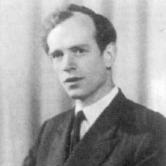
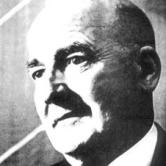 Symmetric bilinear forms are simple to define, but have an elegant
structure theory. Moreover, they have applications all over
mathematics, from manifolds to number fields to finite simple groups
to motivic homotopy. They date from Gauss work on quadratic reciprocity,
and were further studied by the
likes of Eisenstein, Minkowski, Witt, Hasse. They are a
beautiful subject within mathematics.
In this tutorial we will develop their structure theory over integral
domains and then see the variety of their occurrences and uses. No
one will be lost due to lack of
background; no one will be over-qualified, even those who have taken
Math 250 and 260; and no one will be bored. Topics will include:
Grothendieck-Witt rings of finite fields and number fields; type I and
type II inner product spaces over Z; lattices. Final projects can
involve subjects as diverse as the cohomology rings of manifolds,
class fields, lattices, coding theory, and algebraic K-theory.
Symmetric bilinear forms are simple to define, but have an elegant
structure theory. Moreover, they have applications all over
mathematics, from manifolds to number fields to finite simple groups
to motivic homotopy. They date from Gauss work on quadratic reciprocity,
and were further studied by the
likes of Eisenstein, Minkowski, Witt, Hasse. They are a
beautiful subject within mathematics.
In this tutorial we will develop their structure theory over integral
domains and then see the variety of their occurrences and uses. No
one will be lost due to lack of
background; no one will be over-qualified, even those who have taken
Math 250 and 260; and no one will be bored. Topics will include:
Grothendieck-Witt rings of finite fields and number fields; type I and
type II inner product spaces over Z; lattices. Final projects can
involve subjects as diverse as the cohomology rings of manifolds,
class fields, lattices, coding theory, and algebraic K-theory. Prerequisites:: Basic of algebra and linear algebra as can be found in Math 121 and 122. For further information: Contact John Francis, [email protected]. |
|
|

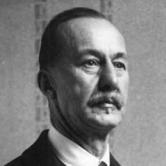 A knot is the same thing to a mathematician as it is to anyone else -
an embedding of the circle into 3-space. Surely knots are such simple
objects that they've been studied to death and there's nothing else
interesting to figure out? No! In fact the more we seem to learn
about the theory of knots, the deeper and richer and more mysterious
that theory becomes.
A knot is the same thing to a mathematician as it is to anyone else -
an embedding of the circle into 3-space. Surely knots are such simple
objects that they've been studied to death and there's nothing else
interesting to figure out? No! In fact the more we seem to learn
about the theory of knots, the deeper and richer and more mysterious
that theory becomes. This tutorial will first provide an introduction to classical knot theory including notions such as the group of a knot, the Wirtinger presentation, the Alexander module and polynomial (these are all based on analyzing the fundamental group of the complement of the knot in the 3-sphere). Then we'll look at newer invariants of knots such as the Jones and HOMFLY polynomials and their realization as quantum invariants. These newer invariants differ in flavor from the classical ones by virtue of the fact that they are not defined from intrinsic geometric properties of the knot or its complement. Rather, they are defined directly from a picture of a knot using data that is coded in the over and under crossings that the picture presents. We'll aim to look at very current areas of study, Vassiliev invariants and Khovanov homology, at the end of the course. Khovanov homology, in particular, has a very beautiful "algebra-free" interpretation where everything is defined in terms of pictures of surfaces with boundary. (I intend either to explain to you or to get one of you to explain to your classmates!) Prerequisites: Knot theory has the advantage that it can be studied without a lot of prerequisites, but I would prefer students to have had some topology (at the 131 level, say) and a little algebra (122/123). For further information: Contact Andrew Lobb, (lobb@math) |
|
|
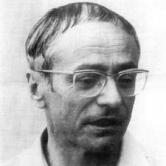
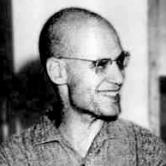 Spectral sequences are one of the most powerful tools at the modern
mathematicians' disposal, arising ubiquitously across the discipline.
In this tutorial, we will discuss the spectral sequences from an
algebraic perspective, focusing on how one actually uses them and how
to interpret the results. People who take this will fearlessly utter
statements like "an elementary spectral sequence argument shows ���."
Spectral sequences are one of the most powerful tools at the modern
mathematicians' disposal, arising ubiquitously across the discipline.
In this tutorial, we will discuss the spectral sequences from an
algebraic perspective, focusing on how one actually uses them and how
to interpret the results. People who take this will fearlessly utter
statements like "an elementary spectral sequence argument shows ���." We will begin by reviewing the algebraic underpinnings of spectral sequences, focusing on the concepts of a chain complex of vector spaces or algebras and moving to the topics of modules and differential graded algebras. With this background in place, we will then move to the meat of the course: How spectral sequences arise and how to understand them. The discussion here starts by introducing filtrations of an algebra and the resulting spectral sequences. These sorts of spectral sequences are perhaps the most ubiquitous of all; and so some time will be spent on how to understand their properties. We will then move on to study exact couples and use them to motivate the more difficult concept of convergence. After discussing convergence, we will, time permitting, study additional topics such as product structures and the behavior of spectral sequences in the presence of additional constraints. Students will have an opportunity in the final weeks of the tutorial to present lectures on various topics that relate to spectral sequences. Students can lecture on important computational applications, such as to the homology of the loopspace of a sphere. There can be lectures on more advanced algebraic structures, such as comultiplication and its interaction with spectral sequences. There can also be lectures on certain specific spectral sequences, such as those of Serre and Grothendieck. Prerequisites: Since the focus will be algebraic, the only prerequisite is a familiarity with basic algebra as is taught in Math 122. No specialized knowledge from particular fields will be required, as we will focus on the general form of spectral sequences rather than the nitty-gritty of particular examples. For further information. Contact Michael Hill, ([email protected]) |
|
|
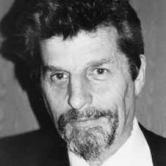
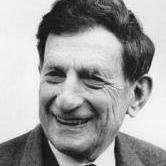 It is often said that mathematics is the language of physics. Though
this may be true, it sometimes seems that mathematicians and
physicists speak very different dialects. In this tutorial we will
bridge this gap by investigating how various algebraic and topological
notions are used by physicists to understand the world around us. In
particular, the powerful concept of symmetry will be explored in the
context of quantum mechanics and quantum field theory. By the end of
the tutorial you should be able to explain to both physicists and
mathematicians the answers to the following questions:
It is often said that mathematics is the language of physics. Though
this may be true, it sometimes seems that mathematicians and
physicists speak very different dialects. In this tutorial we will
bridge this gap by investigating how various algebraic and topological
notions are used by physicists to understand the world around us. In
particular, the powerful concept of symmetry will be explored in the
context of quantum mechanics and quantum field theory. By the end of
the tutorial you should be able to explain to both physicists and
mathematicians the answers to the following questions:
For further information: Contact Daniel Larson (dtlarson@fas) and look at the website. |
|
|
| Summer Tutorials: | 2004 | 2003 | 2002 | 2001 |
|
|